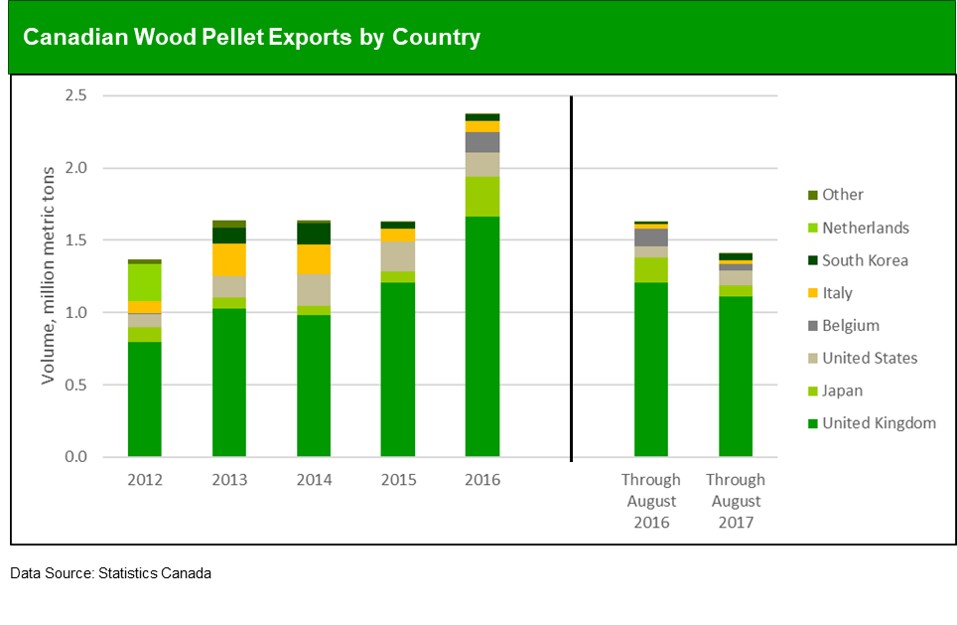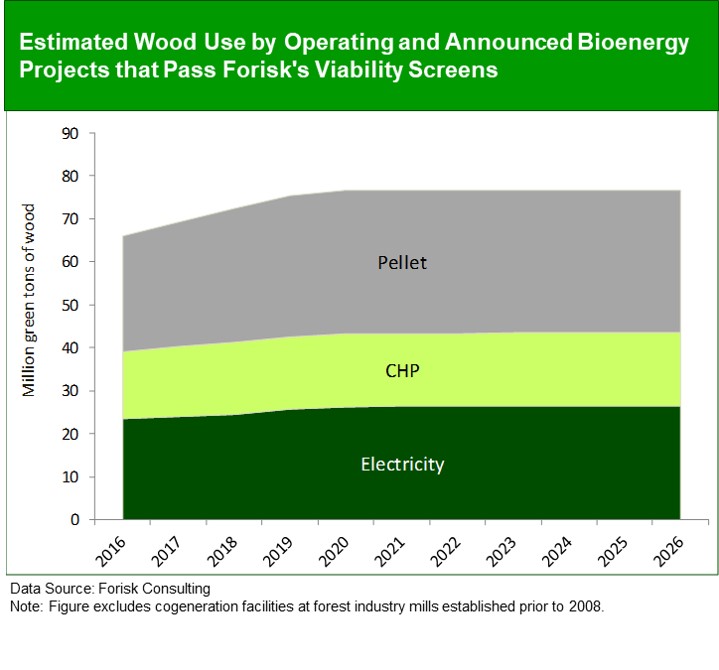This post includes an excerpt from the bioenergy research, authored by Andrew Copley and Amanda Lang, published in the Q4 2017 Forisk Research Quarterly (FRQ) Publication.
Canadian wood pellet exports have slowed; through August 2017, wood pellet exports decreased 13% relative to this time last year.
After years of stable export volumes, Canadian wood pellet exports increased 46% year-over-year in 2016, with the country exporting 2.4 million metric tons. This increase was driven by higher volumes shipped to the UK, Japan, and Belgium. In 2017 through August, however, wood pellet exports were down 13% over this same time last year, with only 1.4 million metric tons of wood pellets exported. Increases in exported volumes to South Korea and the U.S. were offset by declines to the UK, Belgium, and Japan. The UK remains the largest importer of Canadian wood pellets in 2017, representing 79% of total exported volumes.

Through August 2017, U.S. wood pellet exports increased 5% year-over-year.
Increases in exports to Belgium and Denmark offset declines in exports bound for the UK, which were down 6% year-over-year. Despite this, the UK remains the largest importer of U.S. wood pellets with 82% of market share. Belgium was the second largest importer of U.S wood pellets, increasing 75% year-over-year. Denmark remains the third largest importer in 2017, but no material volume has flowed to the country since February. Italy is currently a top-five importer, based on 16 thousand metric tons of volume imported in July 2017. The U.S. is on pace to export 4.9 million metric tons in 2017, representing a 3% increase over 2016 volumes.

Forisk analysis suggests wood use for viable bioenergy projects in the U.S. will be 77 million tons per year by 2026.
As of October 2017, Forisk’s wood bioenergy database tracks 442 operating and announced projects, up from 438 projects in July 2017. These projects represent potential wood use of 112 million tons per year by 2026. Based on Forisk’s analysis, 298 projects pass basic viability screening, indicating potential wood use of 77 million tons per year, down 0.6% from the July 2017 estimate. The figure below details estimated wood use by bioenergy projects in the United States that pass our screens through 2026.

To download the most recent Wood Bioenergy Summary, click here.

Leave a Reply